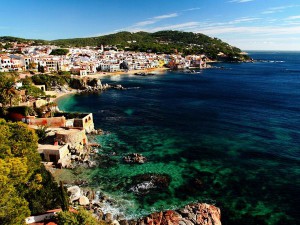Driving Advice Spain
 Going to Spain this summer? Here are som good advices for driving in Spain, that will keep you prepared and safe on your journey. General driving advice and special equipment for driving legaly in Spain. Use this as a checklist before you go to avoid any problems.
Going to Spain this summer? Here are som good advices for driving in Spain, that will keep you prepared and safe on your journey. General driving advice and special equipment for driving legaly in Spain. Use this as a checklist before you go to avoid any problems.
General driving advice Spain:
– A valid full driving licence. The original vehicle registration document and Your passport
– Make sure you have European breakdown cover.
– 112 is the emergency number across Europe.
– Don’t use a hand held mobile while driving.
– If you wear glasses, take a spare pair.
– It is recommended that you have a reflective jacket in the car – they are compulsory in many European countries.
– Speed camera / radar detection systems are illegal in most European countries. Come countries have also banned the use of sat navs which detect fixed speed cameras so ensure this is deactivated.
– Plan your journey
– There is only one safe rule when it comes to drinking and driving; if you drink, don’t drive.
Check your Car before taking of to Spain:
Service your car before you go to avoid expensive and frustrating breakdowns while away. Check the tread for wear – the legal limit in the summer for car tyres across Europe is 1.6mm but we recommend a minimum of 3mm as tyres wear quickly after 3mm. Check the tyre pressure – remember to check them when cold. Check tyres for any damage and replace them if you need to. Think about taking a puncture repair kit to get you on the road again without having to change a tyre, until you are able to get to a garage for a replacement.
Driving Advice Spain
– Warning triangle
– Spare Tyre (or a tyre repair kit) and the equipment to change the tyre
– Drivers can overtake on the right on motorways unless there is a slip road or another road indicated and you are taking it.
– On roundabouts you give way to the left unless signposted different. Do not pull into the middle of the road to turn left if there is a solid line on the road; there are usually lanes signposted ‘cambio de sentido’ to change direction.
– If the driver uses glasses, it is recommended that they should carry a spare pair if this is noted on your driving licence.
– Portable equipment such as televisions, videos and DVD players should not be in sight of drivers. GPS devices are allowed within the driver’s eyeline but drivers may not touch or program a GPS outside of a safe parking position.
– Using radar detectors is not allowed, severe penalties apply.
– The use of the horn in urban areas is prohibited unless it’s an emergency. A much-used alternative to the horn is the flashing of lights.
– By law, only full hands-free phone systems are allowed when driving. Earpieces and headphones are banned; fines could amount to €200 if caught.
– If towing a caravan or trailer longer than 12m, two yellow reflectors must be placed at the rear of the towed vehicle.
– In some cities, in one way streets, drivers must park on the side of the road where houses bear uneven numbers on uneven days of the month, and on the side of even numbers on even days.
– Speed limits for private vehicles without trailers (may vary, always look out for signs):
In built-up areas 31 mph (50 km/h)Outside built-up areas 55 mph (90 km/h)On motorways and dual carriage ways in built up areas 49 mph (80 km/h)Motorways 74 mph (120 km/h)Minimum speed limit on motorways and dual carriageways 37 mph (60km/h) Cars towing a trailer have a speed limit of 50 mph (80 kph) on motorways and 44 mph (70 kph) on other roads.
– Seat belts: Seat belts are compulsory for front/rear seat passengers (if fitted.) In private vehicles (excludes taxis), children up to the age of 12 (measuring less than 4ft5in) must be seated using a child restraint system adapted to their size and weight. Children above the age of 12 (or who measure more than 4ft5in) may use an adult seatbelt.

